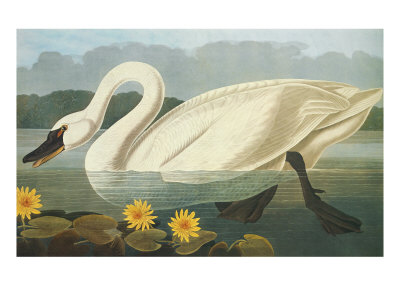
John James Audubon's painting of the Pileated Woodpeckers is typical of his work as it shows the birds in different poses and with clues to their diet and habitat as well as their personalities. It is also composed in a pleasing arrangement for an artistic painting.
I'd like to introduce a new composer today. Franz Joseph Haydn was an Austrian composer during the Classical Period. He is often called the "Father of the Symphony". One of my favorites works by Haydn is his oratorio "The Creation". It is long but in my opinion worth listening to the whole thing. We have taken a week or two and listened to some each day. Much of this is taken directly from scripture and some comes from John Milton's "Paradise Lost". The music itself beautifully parallels the words and describes the creation with sound. From the very beginning sounds, starting with chaos until God says "Let there be light," you can almost hear the light burst forth. When we listened I photocopied an enlarged copy of the words from the booklet in the CD for my children so they could follow along. I tried unsuccessfully to find the words online. The Following link is an overview of this oratorio. It includes detailed descriptions of this oratorio http://en.wikipedia.org/wiki/The_Creation_(Haydn). If you don't plan to listen to the whole thing I would recommend Part 3 as a sample. It is from Day 3 of Creation or you might enjoy Part 7 which has lots of animals. This video intersperses the musicians with beautiful and fitting photography. You can listen to the whole oratorio in about 10 minutes a day for twelve days. I will be featuring this oratorio for two weeks to give time to listen to the whole thing.
Part 1 http://www.youtube.com/watch?v=8omYmytYvlo&feature=related
Part 2 http://www.youtube.com/watch?v=S03cwGuw43s&feature=related I am so sorry to any of you who have already viewed this - I don't know how I missed previewing this section, but as I watched with my children, I saw there are two places with nude artwork that you may want to minimize the screen for and just listen, from 04:28-05:15 and 06:33-06:48.
Part 3 http://www.youtube.com/watch?NR=1&feature=endscreen&v=JYvdjGzlNYc
Part 4 http://www.youtube.com/watch?feature=endscreen&NR=1&v=ucr4VikNxQw
Part 5 http://www.youtube.com/watch?NR=1&feature=endscreen&v=WFs18ayIg5Y
Part 6 http://www.youtube.com/watch?feature=endscreen&NR=1&v=-ul_KX2AV1U
Part 7 http://www.youtube.com/watch?v=8fQ0_HnJYuc
Part 8 http://www.youtube.com/watch?feature=endscreen&NR=1&v=JZFeA-INyV4 (Part 8 does include lots of nude artwork depicting Adam and Eve from about 00:32-04:15. You may want to minimize the screen and just listen. Also footage of a Lion attacking a Wildebeast which might be too graphic for young or sensitive children - you could minimize when the lions start stalking at about 07:45 and continue to listen until this part is past- about 08:12).
Part 9 http://www.youtube.com/watch?v=pRlL_0rTgsM&feature=related
Part 10 http://www.youtube.com/watch?v=zKIYumIqvBQ&feature=related (01:55-02:12 includes an piece of artwork of a person without clothes)
Part 11 http://www.youtube.com/watch?NR=1&feature=endscreen&v=5lhp86YCQUQ (Part 11 from minute 06:52-08:05 focuses on a drawing of Adam and Eve without clothes - you could minimize for that minute....)
Part 12 http://www.youtube.com/watch?v=vJXb2H4J268&feature=related
The following are short biographical sketches of Franz Joseph Haydn's life:
http://library.thinkquest.org/22673/haydn.html
The following is a link to an article that discusses the difficulties that came because this work which was originally done in German has been translated into English by someone who didn't know English very well. http://www.neiljenkins.info/documents/thecreation.pdf
Mrs. Cecil Frances Alexander's hymn "There is a Green Hill" follows:
A choir singing this hymn can be found on the following link: http://www.youtube.com/watch?v=d0ybUpuLn8M


